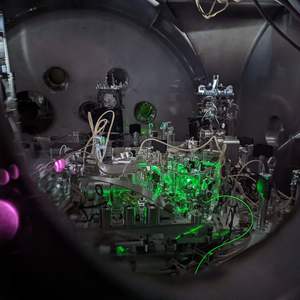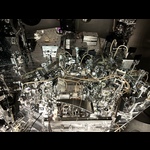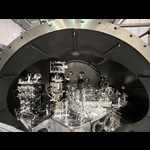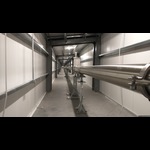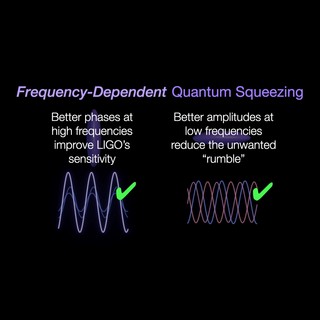LIGO Quantum Squeezing Animation
At the quantum level, there is a minimum level of uncertainty that must exist in any measurement—and this limits LIGO's ability to detect the weakest gravitational waves. This uncertainty is due to something called the uncertainty principle in quantum physics.
The uncertainty principle states that we cannot know the precise amplitude and phase, or frequency, of light at the same time. If you want to know the amplitude with more precision, you wind up with more uncertainty in the phase, and vice versa. It's like squeezing a balloon: if you squeeze it in one direction, it becomes more precise, but the other direction expands and becomes less precise.
While the uncertainty principle poses problems in making precise measurements, it also offers a solution in that researchers can choose where they want their uncertainty to go. By using a technique called quantum "squeezing," they can squeeze the light that they use for their measurements to make it more certain in its phase, and this boosts LIGO's sensitivity to cosmic events. However, a problem arises in doing so because the amplitude of the light becomes more uncertain. These amplitude fluctuations cause mirrors inside LIGO to move around and "rumble," which limits LIGO's sensitivity to lower-frequency gravitational waves.
To work around these fundamental quantum limits of precision, LIGO scientists and engineers have applied an elegant work-around. Their new “frequency-dependent quantum squeezing” technology allows them to squeeze light in the low-frequency range (where the rumble is) so that it has more stable amplitudes, while simultaneously squeezing the high-frequency light to give it more accurate phases. The result is that LIGO is more sensitive than ever to weaker gravitational waves and can sense cosmic collisions across a wider expanse of space.
Video credit: Caltech/R. Hurt (IPAC)
- Date
- October 23, 2023
- ID
- ligo20231023v1
- Type
- Education
- Credit
- Caltech/R. Hurt (IPAC)

